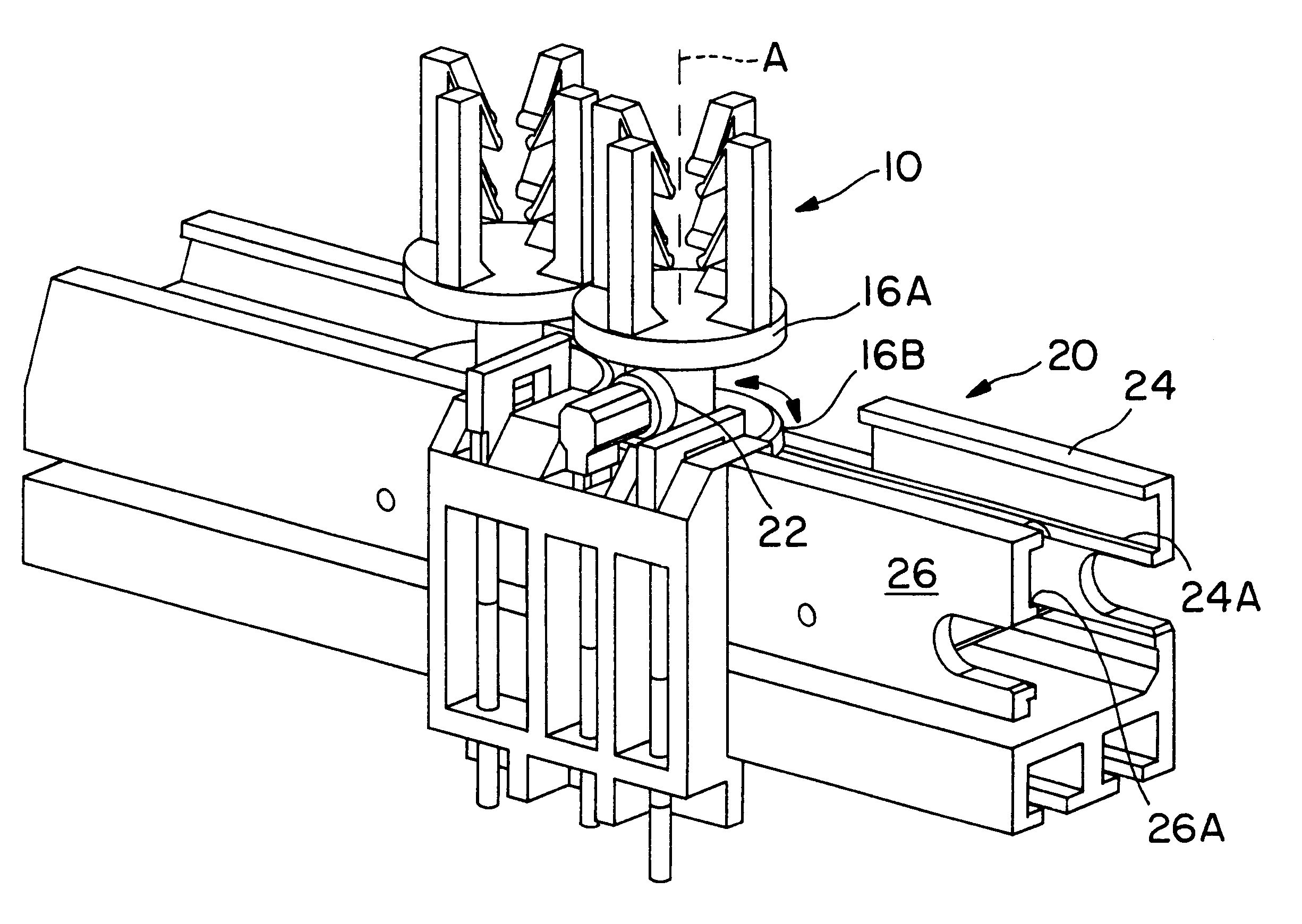Specimen carrier for automated transport system and method and apparatus for identifying same
a technology of automatic transport system and specimen carrier, which is applied in the direction of charge manipulation, instruments, furniture, etc., can solve the problems of difficult to control the extent of the magnetic interrogation field of the reader, disadvantageous from the standpoint of manufacturing cost and complexity, and easily corrupted and even erased containers
- Summary
- Abstract
- Description
- Claims
- Application Information
AI Technical Summary
Benefits of technology
Problems solved by technology
Method used
Image
Examples
Embodiment Construction
Referring now to the drawings, FIG. 1 illustrates a specimen carrier 10 adapted to be transported by an automated conveyor system while supporting a cylindrically-shaped specimen container, e.g. a test tube or vial, in a generally upright orientation. A portion of such conveyor system is shown in FIG. 4. Carrier 10 preferably comprises a unitary (i.e., one-piece) structure 12 defining (i) a container-retaining portion 14 for receiving, supporting and retaining a specimen container C (shown in FIG. 2) in an upright orientation; and (ii) a pedestal portion 16 adapted to be engaged and manipulated by certain components of the automated conveyor system for the purpose of advancing the carrier along a predetermined path and for selectively rotating the carrier about a central axis A so that, for example, a barcode label on the container or carrier can be more easily read by a barcode reader positioned along the transport path. The container-retaining portion 14 comprises a plurality of r...
PUM
| Property | Measurement | Unit |
|---|---|---|
| diameter | aaaaa | aaaaa |
| height | aaaaa | aaaaa |
| height | aaaaa | aaaaa |
Abstract
Description
Claims
Application Information
 Login to View More
Login to View More - R&D
- Intellectual Property
- Life Sciences
- Materials
- Tech Scout
- Unparalleled Data Quality
- Higher Quality Content
- 60% Fewer Hallucinations
Browse by: Latest US Patents, China's latest patents, Technical Efficacy Thesaurus, Application Domain, Technology Topic, Popular Technical Reports.
© 2025 PatSnap. All rights reserved.Legal|Privacy policy|Modern Slavery Act Transparency Statement|Sitemap|About US| Contact US: help@patsnap.com



